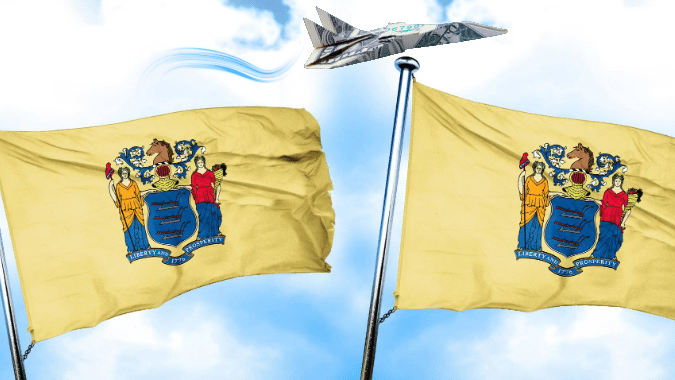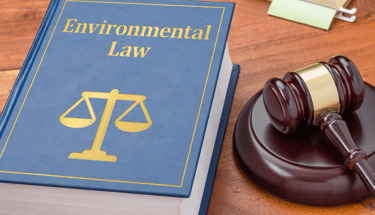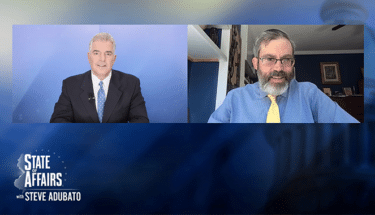Last Thursday, the Senate Environment and Energy Committee (SEN) was poised to meet at 10 a.m. to consider S-877 (Sweeney, Smith) which would have established Nuclear Diversity Certificates. However, negotiations with the Governor’s office started Wednesday night and continued throughout the day on Thursday. Around 1:30 p.m. the bill had morphed into a 50 page Senate Committee Substitute that included zero emission credits, battery storage, energy efficiency portfolio standards, wind incentives, changes to the renewable portfolio standards, changes to the SREC market, community solar, and more. Many people were having trouble with the process of introducing such drastic changes without sufficient time to digest them. Senate President Steve Sweeney made the decision to turn the committee into a hearing and transfer the bill to Senate Budget and Appropriations for a vote on February 5. But because the SEN did not take a vote on the bill, the changes were not officially entered into the record. NJBIA has a copy of the pending bill and if you are interested in it, please email Marcy.
Of note, all of the items in this bill are in addition to other state policies currently being contemplated such as the Regional Greenhouse Gas Initiative (RGGI) which Governor Murphy has started the State’s efforts to rejoin or possible updates to the Energy Master Plan.
NJBIA testified at the hearing and raised our previous concerns about the bill. While we are still analyzing this legislation, NJBIA welcomes the feedback of our members on how these provisions will impact your company. NJBIA believes the following concerns must be addressed before the bill is considered:
1) The bill does not reflect any Federal regulatory actions, such as a FERC ruling, that would be subtracted from NJ subsidies. Furthermore, while the bill references a regional compact, it is not clear that PJM, as an independent system operator, would be considered as such. (Section 3 i3; 3e5)
NJBIA Position: Language does not sufficiently reflect that regulatory and ISO actions would also be subtracted from any ratepayer subsidy.
2) How will excess money be returned to ratepayers? On bill credit? Check? How do you handle customers that have moved or disconnected service? (Section 3j2)
NJBIA Position: The current bill does not address how refunds would be processed, only that they are to be given at the end of the energy year. Language should stipulate that for current customers an on-bill credit would be given, and if a customer has moved out of the utility service territory, a prorated refund would be mailed.
3) $250,000 application fee may not cover the Board’s full cost and any remaining costs are borne by ratepayers. (Section 3j1)
NJBIA Position: Instead of ratepayers shouldering the burden, the BPU should be given the flexibility to increase the application fee to cover necessary costs. Ratepayers should not have to pick up the excess charges.
4) The definition of nuclear plant is not limited to New Jersey facilities. A Pennsylvania nuclear power plant, for example, could also apply for credits arguing it delivers power to the state, helps improve NJ air quality, and could have an adverse impact on the grid. (Section 3e)
NJBIA Position: Recognizing interstate commerce issues, there also needs to be awareness that New Jersey ratepayers could subsidize out-of-state plants.
5) Effective immediately but no sunset.
NJBIA Position: Language should reflect a sunset through the three-year review process and set a timeframe for when the subsidy would no longer be applicable. While the amended version allows for the Board to conduct a study after ten years, it does not sunset the provisions in the bill. The study would only make recommendations. This policy could still remain in effect until 2048.
6) The legislation assumes that nuclear power will still contribute to 40percent of the state’s generation mix. (Section 3i)
NJBIA Position: Oyster Creek (OCGS) will come off line in 2019 and its contribution should not be counted toward overall generation contribution beyond that point. With the Hope Creek and Salem running around 94percent it is not likely that they would achieve additional capacity or efficiencies to make up the amount provided by OCGS. The calculation used in the bill should be reduced to reflect the loss of OCGS and accurately assess the generation each year supplied by nuclear power in state.
7) Changes were made to the process by which customers could see a rate reduction to make it virtually implausible to see a reduced rate. (Section 3j3c.)
Prior versions of the bill had a .75 percent increase but in the current version there is a 1.5 percent increase in the load weighted residential statewide basic generation service rate for the statewide average residential customer based on two prior basic generation service auctions.
NJBIA position: It has been over a decade since NJ has seen an increase of 1.5percent in consumption. In 2016 the load weighted rate went down -4.6 percent. When the legislation purports to decrease consumption and increase energy efficiency, it is counterintuitive to only allow a review when such a drastic increase in energy use would occur for two consecutive years.
8) Changes to the solar market do not address the Solar Alternative Compliance Payment (SACP) and cost to ratepayers. Changes include:
- Balanced market requires a solar carve out where solar renewable energy portfolio standards are a percentage of sales equal to or 10percent +/- the amount of SRECs in an energy year.
- Increasing the amount of solar required starting in EY2019
- Changing the SREC term to 10 years
- Requiring these costs to be absorbed by ratepayers regardless of contract pricing
NJBIA Position: NJBIA previously opposed similar legislation because the Solar Alternative Compliance Payment (SACP) must be decreased at the same time that the RPS is increased. Otherwise ratepayers are on the hook for additional solar requirements without the benefit of a reduced cost through the SACP. Other states have lowered their ceiling without adverse impacts on the market. An economic impact analysis is needed to determine the full impact on ratepayers of the acceleration of solar requirements.
9) The board shall adopt energy efficiency and gas efficiency portfolio standards. (Section 8)
NJBIA Position: This section requires each utility to reduce consumption by 1percent in the first two years and then 1.5percent per year. While this is laudable, it again does not comport with earlier sections of the bill that state that the BPU can only review the nuclear charge if energy consumption INCREASES 1.5 percent for two years. There is no cost analysis of what the savings might yield in price reductions or what the utilities might have to do in order to achieve these savings. While there will be a study, it will not be done before the requirements commence. Furthermore, there is no requirement that utility programs be coordinated with current or future state clean energy programs so ratepayers could wind up paying twice for the same type of programs.
10) The Neighborhood Solar Investment Program has no limits to size or scope or location of project.
NJBIA Position: There is limited consumer protection or verification of the developer before accepting investment. The legislation again does not recognize how this could interact with other sections of the bill such as balanced market or expansion of the RPS. NJBIA is seeking additional information on the full impact of this proposal.
11) The EDA will provide financial assistance to offshore wind projects.
NJBIA position: The term “financial assistance” must be spelled out (ex. – tax credits, loans, grants) and any such financial assistance must be considered in relation to the existing OREC value noting what the overall economic impact to the ratepayer will be. Further, the procedure for review of proposals and timeframe for financing needs to be defined. Finally, the bill should explain the ultimate funding source and whether that includes ratepayer dollars.
12) Job training for off shore wind.
NJBIA Position: NJBIA has supported customized training, however, the parameters for such job training need to be included.
13) Exclusion of Rate Counsel.
NJBIA Position: Ratepayers need to be represented in all proceedings, especially those in which ratepayers could be subject to paying for the tariffs and fees that are a result of the policy. Rate Counsel must be at the table to represent the interests of all rate payers.
This is a complex bill full of many policy initiatives. NJBIA appreciates your feedback and welcomes your participation in the policy discussion. Please reach out to Sara with your thoughts.






